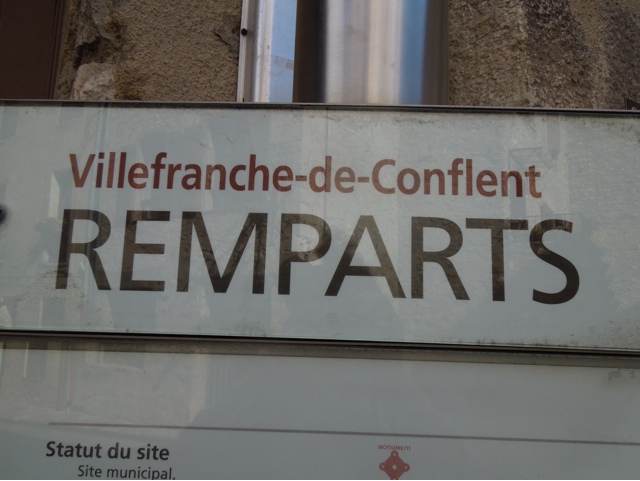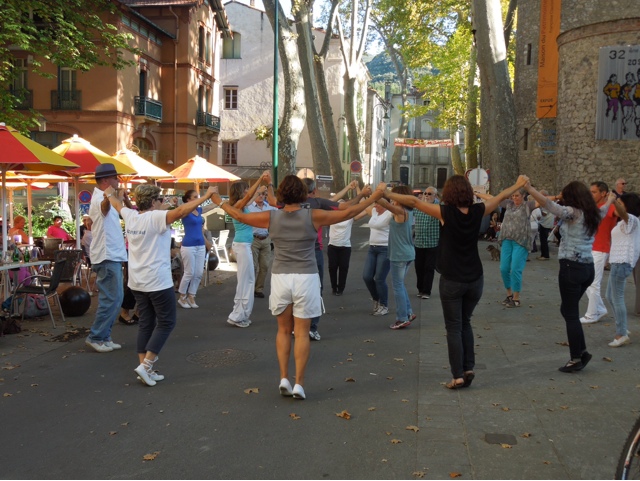Sebastien Le Prestre de Vauban (1633-1707)
He joined the army of Conde, the enemy of the king during the Fionde. He was taken prisoner in 1653- and became a Royal army engineer at the age of 23.
From 1673 he experimented in a seige method that remained for two centuries. He would employ a rational occupation by saving as many lives as possible. He worked under Louis XIV for 54 years.
"A town seized by Vauban is a town taken; a town defended by Vauban is an impregnable town".
17 Century
Built by the Kingdom of Aragon in the laate 15th century. The fortress is on a strategic site on the main road linking France and Spain. Constructed in 7 years in 1497,its architecture has great majesty.
The development of artillery. Changing techniques of war in the late Middle Ages explain the architecture of Sales. in the 14th century there were enormous stone cannonballs, fired from close quarters. They would break upon impact. In the mid 15th century the metal cannonball, was capable ofbreaching the high mediaeval curtain walls. The rebuilding of the fortress in 1497 met the challenge by sinking the outer walls into the ground and making them thicker. This was effective against enemy projectiles but considerably reduce the firing range of the loopholes. The number of loopholes was increased.
First built during the Middle Ages, Villefranch-de-Conflent city walls were deeply tranformed by Vauban in 1669 for King Louis XIV. In an amazing place, protected from the sun and the rain.
Mont Louis was originally a fortified town bounded in 1679 by Vauban to defend the new borders laid down by the Treaty of the Pyrenees. Today the town is classed as a UNESCO World Heritage Site.
The solar furnace was installed in 1953. The concentrating panel refurbished in 1980 consists of 860 parabolic mirrors and the heliostate of 546 flat mirrors. The strucgture focuses the sun's rays into its centre where temperatures reach up to 5,400 - 6,300F. Since July 1993 it has ben used for commercial rather than research purposes.
The "Canary" painted in Catalonia's yellow and red, has been running between Villfranche-de-Conflent and Mont-Louis since 1910.
The train passed through mountain passes and gorges that were harrowing, and very narrow.
I parked the car in Villfranche and got off at Mont Louis (90 minute trip). I toured Mont Louis, had lunch, and got back on the train to Villfranche. It was a beautiful journey. I left at 10:00AM, arrived in Mont Louis at 11:30AM. Left Mont Louis aat 4:00 and arrived in Villfranche at 5:15.
In the 12th century during the course of the Romanesque art period, an anonymous ssculptor left unparrelled masterpieces, with an incomparable style in the Pyrenees Orientales,Catalonia, and in Tuscany. The Master of Cabestany is the name given to this anonymous man.
The "master" has used a style that is unique. Deformed hands,and upper parts of the body; powerful nose; small chin; eyes are predominant; groups of figures standing out from the background.
In 1930 the Church of Notre Dame in Cabestany linked churches in Italy and Spain with this sculpture.
A beautiful village in Northern Roussillon with the only heptagonal bell tower in a former Benedictine Abbey.
A small village south of Argeles where Francois Desnoyer (1894-1947) was from. He painted many pictures of women on the beach in this area.
This is a northern area where the Tautavel Man was found in 1971 in a cave in the Caune de'L'argo.He has been traced to 450,000 years old - pre Neanderthal - 100,000 years old . The Neanderthal man had a scull that was 1600 cc vs our modern day man 1450cc. Man lived 1.8 million years ago,and our modern man only lived 30,000 years ago.
Life at the time of the Tautaval man......
Sculptor who lived in the hills outside Banyuls. He was considered one of the greatest sculptors of his day. He was greatly influenced by Gauguin. His first sculpture, seated nude, is modeled after his wife. Three of his sculpture's grace the Metropolitan Opera House in New York City.
This is a small town in Western Roussillon. It is a vast wine growing region. I stayed overnight in a hotel called Riberach. It is made from wine casks and has a Michelin star restaurant.
Roussillion is a small area for the wine producing area of France. It is considered 9th among France's departments of wine.Only 2% of the national product are grown in this area. However 80% of the wines in this area are the fortified sweet wines. There are 14 AOP certified French wine regions.
The climate of this area is sunny, hot, and mostly dry. Perfect for wine growing.
This is a 16th century dance that is traditional to Catalan. It is done in a circular motion with hands raised above. There are 3 series of steps 2/8 time; 4/4 time; and 6/8 time. It is a dance to show unification and happiness. The band that plays the music is called the COBLA- 10 wind, double base,tambori (little drum), 5 woodwinds, and two flutes.
We watched this dance in Ceret, on a late Sunday afternoon, after a festival.





























































































 ONE OF THE MOST BEAUTIFUL VILLAGES IN FRANCE.....EUS.....
ONE OF THE MOST BEAUTIFUL VILLAGES IN FRANCE.....EUS.....




No comments:
Post a Comment